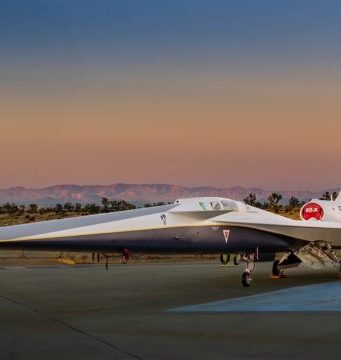People give instructions at varying levels of abstraction -- from the simple and straightforward ("Go north a bit.") to more complex commands that imply a myriad of subtasks ("Take the block to the blue room."). A new software system...
Tim Koehler, a Sandia National Laboratories mechanical engineer, is using computational fluid dynamics modeling to help the Santa Fe, New Mexico, company Atmocean with the design of a buoy — shown here in a miniature prototype — that powers...
Carnegie Mellon University researchers have developed methods to detect the body pose, including facial expressions and hand positions, of multiple individuals. This enables computers to not only identify parts of the body, but to understand how they are moving...
This is a graph with six nodes and three colors.
Credit: Georgia Tech
Some problems are so challenging to solve that even the most advanced computers need weeks, not seconds, to process them.
Now a team of researchers at Georgia Institute...
Researchers at the University of Texas at Dallas have designed a wearable, flexible biosensor that can reliably detect and quantify glucose from very small amounts of human sweat.
Credit: University of Texas at Dallas
Researchers at The University of Texas at...
Researchers at the University of Texas at Dallas have developed a wearable diagnostic biosensor that can detect three interconnected, diabetes-related compounds -- cortisol, glucose and interleukin-6 -- in perspired sweat for up to a week without loss of signal...
This is a specially designed laser system and a new methodology based on gated digital holography enable LiDAR to see through obscuring elements like foliage and netting.
Credit: US Naval Research Laboratory
Shortly after lasers were first developed in the 1960s,...
Berkeley Lab scientist Gary Andersen led a study that identified all of the principal oil-degrading bacteria in the 2010 Deepwater Horizon oil spill.
Credit: Berkeley Lab
The Deepwater Horizon oil spill in the Gulf of Mexico in 2010 is one of...
Researchers created a film of moth-eye-like nanostructures that can improve the sunlight visibility of screens on mobile phones and tablets. The images show the nanostructures from above (left) and from the side (right).
Credit: Shin-Tson Wu, College of Optics and...
This scaled-up test bed of NEWT's direct solar desalination technology uses carbon black nanoparticles that convert as much as 80 percent of sunlight energy into heat. Results from an earlier prototype showed the technology could produce as much as...
This is the Cu2O (right) that gets photocorrosion compared to Cu2O/TiO2 (left) that operates under a Z-scheme to reduce CO2.
Credit: Ruixin Zhou, UK doctoral student of chemistry.
A team of chemists from the University of Kentucky and the Institute of...


















